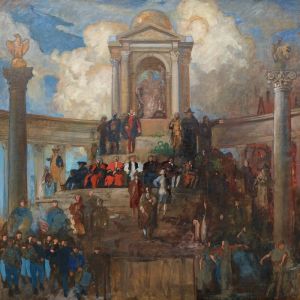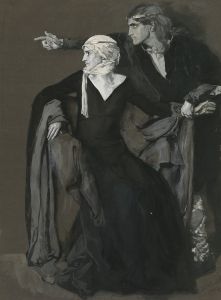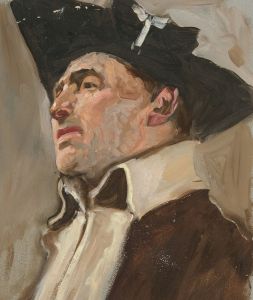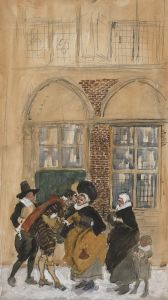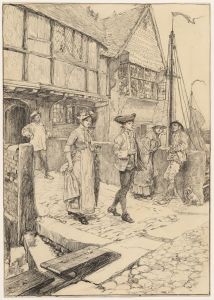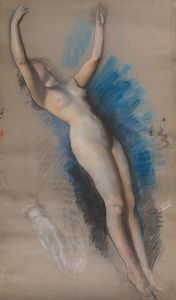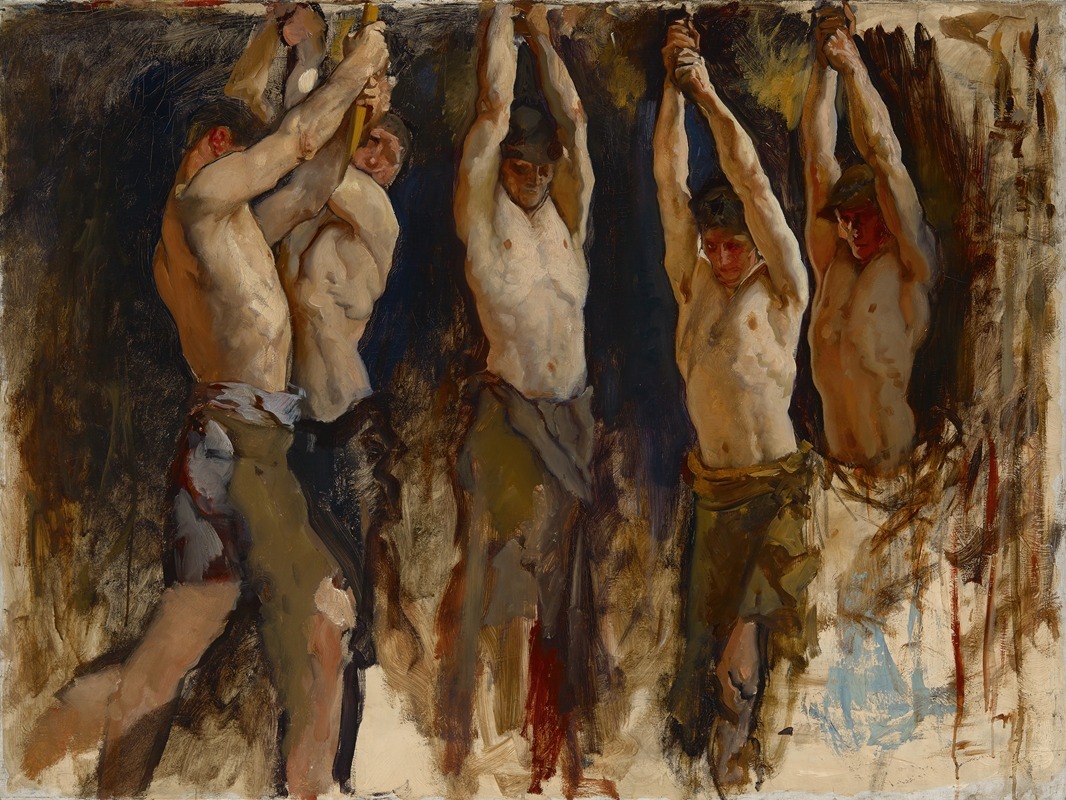
Figure Study, for The Spirit of Vulcan, Genius of the Workers in Iron and Steel, Rotunda, Pennsylvania State Capitol, Harrisburg
A hand-painted replica of Edwin Austin Abbey’s masterpiece Figure Study, for The Spirit of Vulcan, Genius of the Workers in Iron and Steel, Rotunda, Pennsylvania State Capitol, Harrisburg, meticulously crafted by professional artists to capture the true essence of the original. Each piece is created with museum-quality canvas and rare mineral pigments, carefully painted by experienced artists with delicate brushstrokes and rich, layered colors to perfectly recreate the texture of the original artwork. Unlike machine-printed reproductions, this hand-painted version brings the painting to life, infused with the artist’s emotions and skill in every stroke. Whether for personal collection or home decoration, it instantly elevates the artistic atmosphere of any space.
Edwin Austin Abbey's Figure Study, for The Spirit of Vulcan, Genius of the Workers in Iron and Steel, Rotunda, Pennsylvania State Capitol, Harrisburg is a preparatory work created by the American artist as part of his contributions to the Pennsylvania State Capitol in Harrisburg. Abbey, a prominent muralist and illustrator of the late 19th and early 20th centuries, was commissioned to produce a series of murals for the Capitol's interior, which was designed to celebrate Pennsylvania's history, industry, and cultural achievements.
This specific figure study is associated with Abbey's larger mural project in the Capitol's Rotunda, which includes allegorical and symbolic representations of various themes. The work referenced here focuses on Vulcan, the Roman god of fire and metalworking, and serves as a tribute to the workers in Pennsylvania's iron and steel industries. During the late 19th and early 20th centuries, Pennsylvania was a leading center of industrial production in the United States, particularly in steel manufacturing, making this theme highly relevant to the state's identity and economic history.
The figure study reflects Abbey's meticulous process of preparation and design. Known for his attention to detail, Abbey often created numerous sketches and studies before completing his final murals. These preparatory works allowed him to refine his compositions, poses, and symbolic elements. While the final mural in the Rotunda incorporates multiple figures and complex allegorical imagery, the figure study isolates specific elements, focusing on the form and expression of individual characters.
Abbey's work for the Pennsylvania State Capitol was part of a broader movement in American art during the late 19th and early 20th centuries, which sought to integrate fine art into public architecture. This movement aimed to inspire civic pride and educate the public through grand, narrative-driven artworks. Abbey's murals, including those related to Vulcan and the workers in iron and steel, exemplify this approach, blending classical influences with contemporary themes.
Unfortunately, Edwin Austin Abbey passed away in 1911 before completing all of his planned murals for the Capitol. His work was highly regarded during his lifetime, and his contributions to the Pennsylvania State Capitol remain a significant part of his artistic legacy. The figure study, along with other preparatory works, provides insight into Abbey's creative process and his vision for the Capitol's decorative program.
Further details about the specific figure study, such as its current location or additional historical context, are not readily available.






